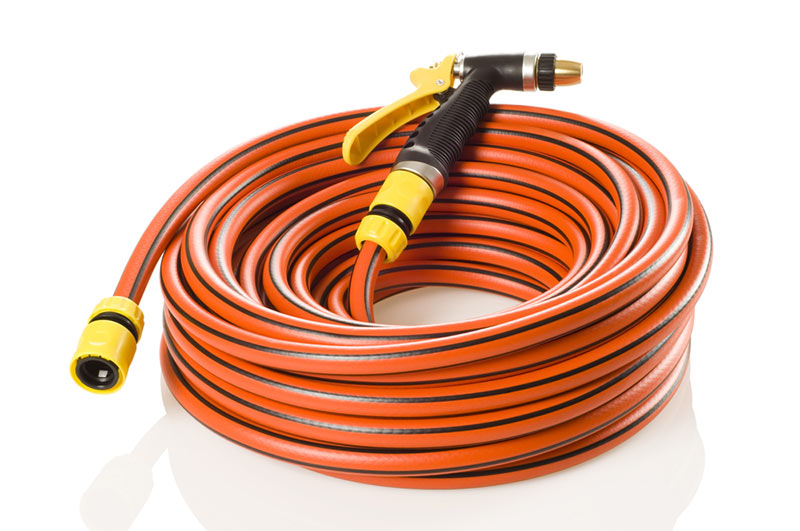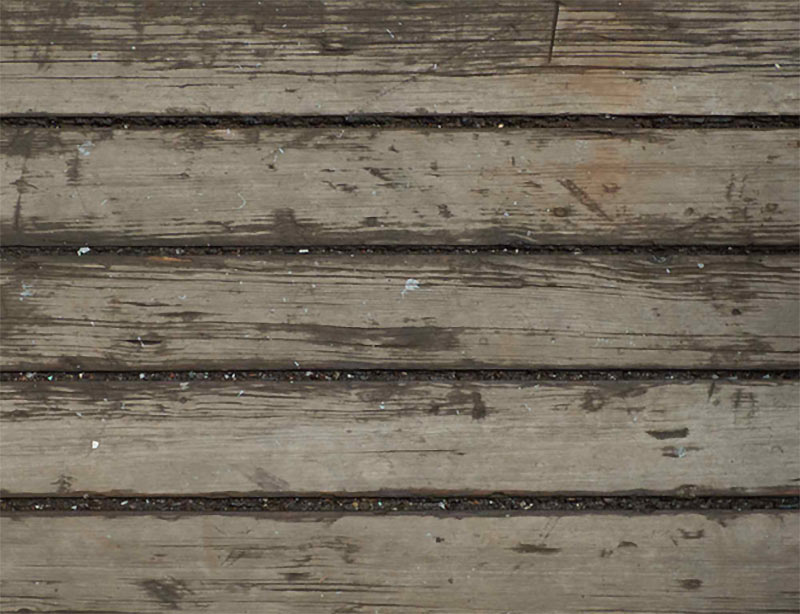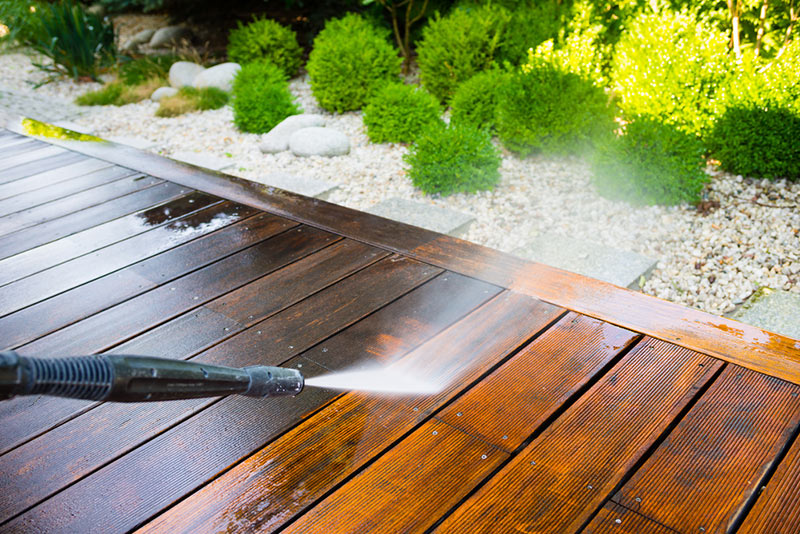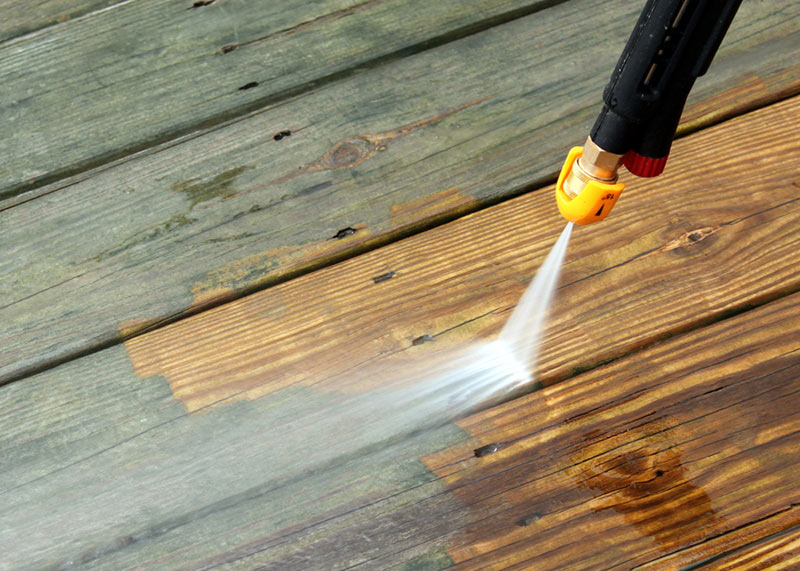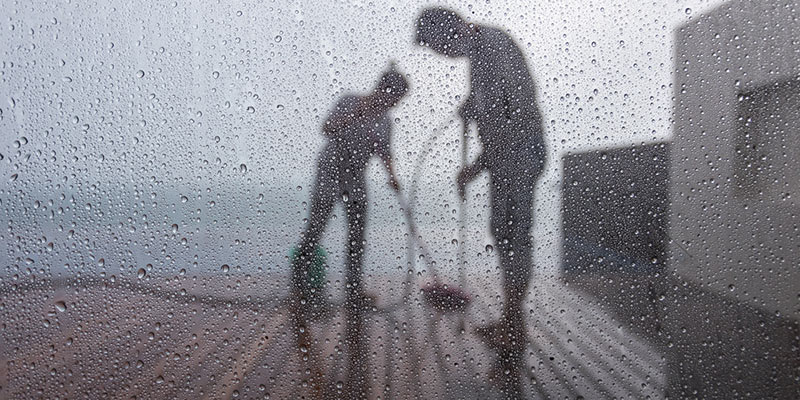
The power washer has been hailed as one of the most effective tools for cleaning, especially for large surfaces that have spent most of their days covered in dirt and potentially compromising substances. However, despite this accolade, it may not be the most ideal for some surfaces. Take a wooden deck, for example. Too much pressure can disintegrate the soft wood and ruin it entirely. In this series of power washer Dos and Don’ts, find out how to clean a wood deck with a power washer the right way to maximize the tool’s cleaning capacity without destroying your precious wood.
Everyone loves a nice, clean wooden deck that’s perfect for lazy days and relaxation.
Tip #1: Do keep your distance. Don’t stand too close.
In cleaning a particular surface using an owned or rented power washer, it is very important to consider the pressure you release. If you don’t have additional power washer tools to control how much pressure you are releasing, it is best to retreat to a safe distance, not nearer than 12 inches from the wooden surface, before turning the power washer on. The farther you are from the surface you’re cleaning, the less the water pressure you’re releasing.
Cleaning a wooden deck takes as little pressure as possible, just enough to get rid of the dirt that sits on top of it. If you think your power washer still goes on a rampage no matter how far you are from the surface, maybe you should go for a regular expandable water hose instead to remove the filth from your wooden deck.
A typical garden hose can be used as an alternative to high-pressure power washers.
Tip #2: Do test out your water pressure. Don’t turn the washer on without testing.
Before turning on your pressure washer, it is crucial that you test your water pressure levels out first for several reasons. For one, wood is much more vulnerable than most surfaces, so it needs just the right amount of pressure to get rid of mildew, grime, dust, and other filth that commonly set on wood.
Ideally, for soft types of wood such as pine or cedar, the water pressure should be set at around 500 to 600 psi. For the harder types, it should be no more than 1200 to 1500 psi. Testing the water pressure levels also avoids uncontrollable motions brought by the sudden flow of high water pressure levels. The test should be done outdoors with no potential human and surface victims to hit.
A dirty wooden deck surface ready for a power washer clean-up operation.
Tip#3: Do invest on top selections. Don’t go for the cheapest ones.
Invest on top selections and other similar power washer add-ons to guarantee full control over the water pressure levels you release. A 40-60 degree fan tip, for example, is a must-have power washer add-on, especially ideal for cleaning the surface of a wooden deck. This allows for a more manageable wooden deck cleaning operation.
A power washer with the right nozzle is essential in keeping wooden decks free from dirt and mildew.
Tip #4: Do clean in a sweeping motion. Don’t concentrate water levels on a single area.
It is ideal to clean wooden decks according to the placement of the wooden boards.
The trick to cleaning a wooden deck using a power washer is laterally moving your arm back and forth, producing a sweeping cleaning motion that distributes the water evenly across the wooden deck surface. This consistent motion should be paired with a steady distance. By feathering this motion parallel to how the wooden deck boards are placed with very slight overlaps between adjacent areas, you guarantee an even cleaning operation free of visible edges and hot spots.
A big no-no would be to concentrate high water pressure levels on a single area of the wooden deck’ surface and rely solely on cleaning solutions. This could produce an uneven end result and potentially damage your deck. If dirt are very stubborn, use only the recommended mild cleaning solutions to preserve the beauty of your wooden deck.
Avoid keeping the nozzle too close when cleaning a wooden deck to avoid damage.
Conclusion
The power washer is, indeed, a mighty tool that you can use for a variety of purposes and cleaning projects. However, keep in mind that each of these projects requires a unique set of conditions that you need to adhere to in order to keep your surfaces evenly cleaned and free from damage. Mostly, it has to do with the levels of water pressure you’re releasing. You wouldn’t want to stand too close and go high-pressure on a dirty car, now would you? Please share with us your comments and even more suggestions on how to clean using a power washer in the section below.
About the Author

Hi there! I’m Lucy – founder of GardenAmbition.com and I’m a self-confessed garden fanatic. Gardening has always been a passion of mine and will always be my favorite pastime. Now that I am married and have one adorable son, I have the time to write and share my personal experiences with other garden enthusiasts like me.


